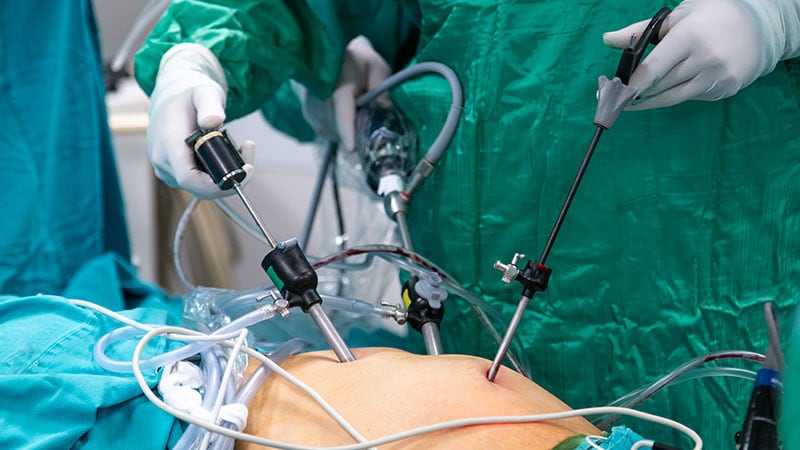Not Getting Enough Sleep May Raise Hypertension Risk, Especially for Females
March 28, 2024Experts Aim to Use Brown Fat to Burn Fat More Effectively Experts Aim to Use Brown Fat to Burn Fat More Effectively
March 29, 2024
Trials have provided data regarding the safety, cost, and efficacy of antibiotic therapy in the management of adult appendicitis. So, should uncomplicated appendicitis be operated on? Can a meta-analysis provide an answer?
Although appendectomy remains one of the most common operations worldwide, several studies have challenged the dogma of systematic surgical treatment in uncomplicated acute appendicitis (UAA) in adults over the past 30 years. These studies are based on the frequent effectiveness of curative antibiotic therapy in colonic diverticulitis.
The advantages of nonsurgical treatment (NST) compared with surgical treatment would be a reduction in complications and recovery time, at the cost of an increased risk for recurrence and a longer hospital stay. A team from Milan, Italy, wanted to clarify this issue by conducting a meta-analysis of randomized controlled trials, published before December 2023, comparing NST and surgical treatment in UAA in adults.
A Large Meta-Analysis
Nonrandomized studies, those that included complicated appendicitis, and those involving UAA in children, were excluded from the analysis. The primary analysis criteria of the meta-analysis were the primary success rate without complications (complications or recurrence for NST and postoperative complications for surgical treatment) and the 1-year success rate. The latter was defined as primary failure or recurrence during the 1-year follow-up period for NST and as disappearance of symptoms after surgery for surgical treatment. Secondary criteria were the rate of laparoscopic surgery, costs incurred by each method, initial hospitalization duration, and quality of life. In the analysis of the collected data from the studies, the authors used a significance level (alpha risk) of 0.05 (5%) and power (1-beta) of 0.20 (80%).
Eight randomized and controlled studies (n = 3213 patients) were included, showing some heterogeneity regarding the diagnostic criteria used to define UAA (eg, no systematic radiological assessment in some studies), antibiotic treatment modalities (eg, molecule and duration), and follow-up criteria. The bias analysis showed low risks for most studies in the most crucial areas.
The primary success rate was 70.45% (1066/1513) for NST and 84.49% (1248/1477) for surgical treatment, with a relative risk (RR) of 0.80 (P < .00001) in favor of surgical treatment.
Seven studies provided 1-year follow-up data. NST had an efficacy rate of 64.51% (540/837), and surgical treatment had a rate of 96.8% (788/814), with an RR of 0.69 (P < .00001) in favor of surgical treatment, but with a significant level of heterogeneity. There was no significant difference in the length of stay between NST and surgical treatment, with, however, a high level of heterogeneity among the studies. Cost analysis data from three studies showed a significant reduction in favor of NST (P < .00001), with a low level of heterogeneity among the studies.
Regarding the rate of complications, there was no difference between the NST group (8.98%, 145/1613) and the surgical treatment group (10.88%, 173/1590): RR of 0.66 (P = .07), with a high level of heterogeneity between the studies. The methods of assessing the quality of life were not uniform enough to statistically evaluate it, although there were no significant overall differences in the three studies that assessed this criterion.
In summary, this meta-analysis shows that the primary failure rate of antibiotic therapy in adult UAA is 29.5%, increasing to 35.6% at 1 year, with no significant difference in complications or hospital stay compared with surgery but with lower costs.
Interpreting the Data
Surprisingly, the rate of complications proved comparable for nonsurgical therapy and surgical therapy, probably because of the progressive adoption of laparoscopic appendectomy (LA). Compared with open appendectomy, LA significantly reduces the risk for infectious parietal complications. It reduces the length of stay to a slightly lesser extent. The oldest of the selected randomized studies was from 1995, and at that time LA was not common practice. In the most recent study, which was published in 2021, 90% of procedures were LA.
It should be noted that some studies included patients with an appendicular fecalith, which is known to entail a higher risk for an unfavorable outcome under antibiotic therapy. Indeed, in the older studies, not all patients were assessed by a scanner. Note that this meta-analysis did not address the issue of readmissions, which are almost three times more frequent for nonsurgical therapy and inevitably affect quality of life and work stoppage. Finally, there was a high level of heterogeneity regarding antibiotic therapy for the type of molecule used, the duration of parenteral administration, and the switch to oral administration. One might also question the frequent use of quinolones for probabilistic antibiotic therapy.
If the main short-term risk for nonsurgical therapy is primary failure in about 30% of patients, what about the long term? A recent study shows that with nearly 20 years of follow-up, more than half of the patients treated with nonsurgical therapy have not had recurrence. The only significant long-term risk is recurrence. This can be treated again with antibiotic therapy, and if surgery is necessary, it does not seem to be associated with a higher risk for complications or technical difficulty.
Although it fails to provide a definitive answer, this meta-analysis provides quantitative data to emergency physicians and surgeons for an informed discussion with patients with UAA. The way this information is presented is crucial and varies, of course, according to patients’ beliefs. Some will consider one-third failures, while others will emphasize two-thirds successes!
This story was translated from JIM, which is part of the Medscape professional network, using several editorial tools, including AI, as part of the process. Human editors reviewed this content before publication.
